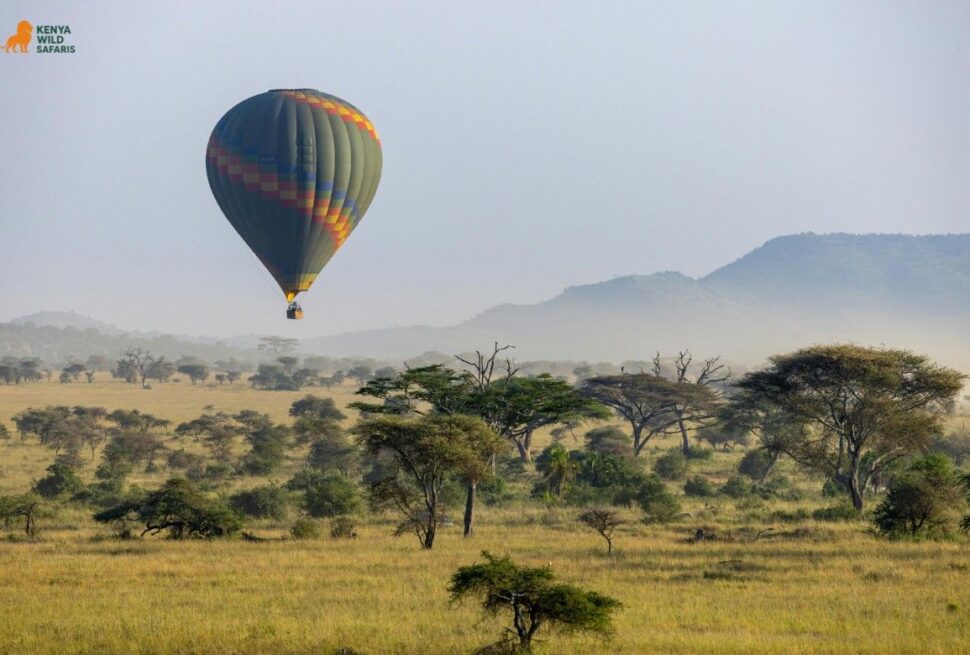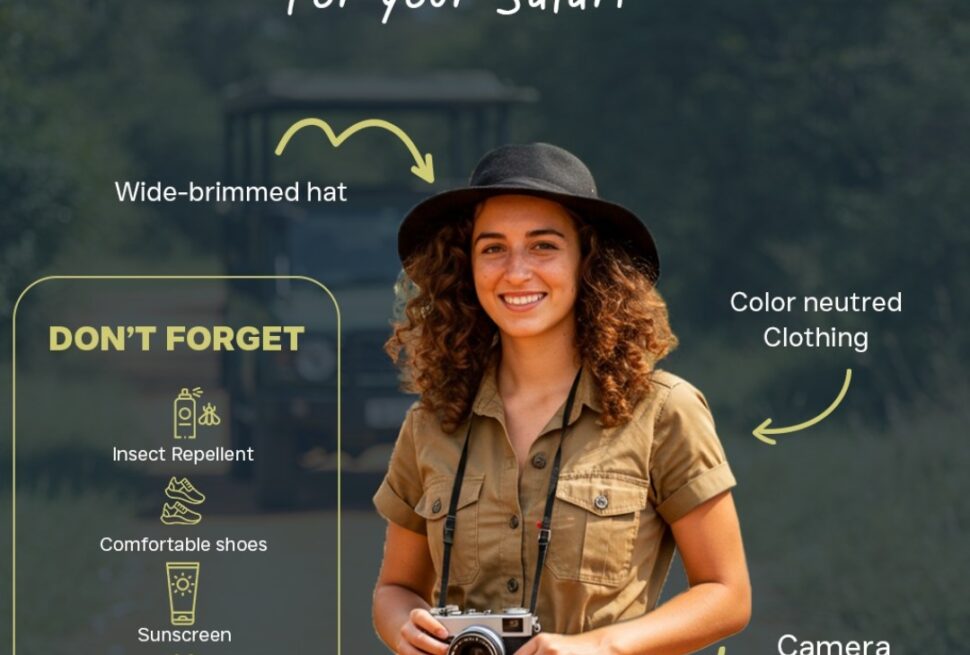Deciding Between Cash or Card for Your Safari Expenses

Introduction — My Safari Money Dilemma
Before flying to Nairobi, I wasn’t sure how I’d pay — should I bring dollars, cards, or trust Kenyan ATMs? This was the question that swirled in my mind as I meticulously planned my dream safari trip. The excitement of seeing the majestic Big Five in their natural habitat was palpable, but beneath it lay a layer of logistical anxiety: how to pay in Kenya. How would I navigate the financial landscape of a new country? Would my trusty credit cards be accepted everywhere, or would I need a wad of local currency? This confusion, I soon realized, is a common hurdle for many travelers, whether they’re coming from the USA, UK, Australia, Europe, or Canada.
I spent hours poring over travel forums, blog posts, and guidebooks, trying to piece together a coherent strategy for paying for safari Kenya and all the other expenses that come with an East African adventure. Everyone seemed to have different advice, and the information often felt outdated or contradictory. Should I rely on using cash in Kenya exclusively, or would my cards be my best friend? What exactly was the Kenyan currency tips I needed to know? It felt like a riddle I had to solve before even setting foot in the country.
This post is for anyone facing the same dilemma. Here’s everything I learned about using cash and cards across Kenya, from the bustling streets of Nairobi to the remote corners of the Maasai Mara. I’ll share my personal experiences, the mistakes I made, and the savvy strategies I picked up along the way, ensuring you’re well-prepared for your own unforgettable Kenyan journey.
Understanding Kenyan Money — The Basics
To truly understand how to pay in Kenya, you first need to get acquainted with its official currency.
a] What’s the Official Currency?
The official currency of Kenya is the Kenyan Shilling (KES). It’s often denoted by “KSh” or “KES.” The shilling comes in various denominations, both in banknotes and coins. Banknotes are available in KES 50, 100, 200, 500, and 1000. For coins, you’ll find KES 1, 5, 10, and 20. When I visited, the exchange rate hovered around $1 USD ≈ 130–150 KES, but this can vary significantly, so always check the latest rates before you travel. Having a basic understanding of these denominations will make transactions much smoother, especially when dealing with local vendors.
b] Where to Exchange Money
Exchanging your foreign currency for Kenyan shilling is straightforward, but knowing the best places can save you a few shillings. You have two primary options: banks and forex bureaus.
Banks, especially major ones like Equity Bank, KCB, and Absa, offer currency exchange services. They are generally reliable but might have slightly less competitive rates than dedicated Kenya forex bureau operations.
Forex bureaus, particularly in cities like Nairobi and Mombasa, often provide better exchange rates. You’ll find many reputable ones in shopping malls and dedicated financial districts. When looking to exchange money Nairobi, I found that comparing rates between a few bureaus yielded the best results. Always count your money carefully before leaving the counter, and ask for a receipt.
ATMs are also widely available at airports (Jomo Kenyatta International Airport has several), major shopping malls, and in most urban centers like Nairobi, Mombasa, and Nakuru. While convenient for withdrawing local currency directly, be mindful of potential foreign transaction fees from your home bank and the ATM operator.
c] Can You Use USD or Euros?
This was a big question for me, especially regarding my safari. Generally, you can’t use USD or Euros for everyday transactions in Kenya. The Kenyan shilling is king. However, there are exceptions. Safari lodges and national parks often accept USD for park entry fees or for booking luxury accommodations. For instance, some high-end lodges might quote their prices in USD.
A crucial tip if you plan to use USD in Kenya: make sure your notes are clean, crisp, and relatively new (preferably 2006 series or newer). Banks and businesses are very particular about the condition of foreign currency, and they may refuse old, torn, or marked bills. I always kept a stash of pristine USD $50 and $100 bills for emergencies or specific safari-related payments, as this was one of my top Kenyan currency tips.
Using Cash in Kenya — When It’s a Must
Despite the rise of digital payments, paying cash Kenya is often a necessity and, at times, the preferred method.
1] Cash for Small Purchases
When you’re exploring Kenya local markets, browsing unique crafts, or grabbing a quick snack from a roadside stall, cash is king. Most small vendors don’t have card machines, and haggling (which is part of the experience!) is much easier with physical money. I found that having a good supply of KES 50, 100, and 200 notes was incredibly useful for these everyday transactions. Trying to pay for a KES 50 item with a KES 1000 note can sometimes be challenging for vendors to make change.
Local transport, such as matatus (public mini-buses), boda bodas (motorcycle taxis), and regular taxis not operating through ride-sharing apps, almost exclusively require cash payments. Knowing this upfront will save you from scrambling for an ATM.
2] Tipping in Cash
Tipping in Kenya is a common practice, and cash is always preferred. Guides, drivers, hotel staff, porters, and even waitstaff appreciate a direct cash tip. It ensures they receive the full amount immediately, without any deductions or delays that can sometimes occur with card-based tips.
I learned the importance of having small denominations for safari tipping. After a long day of game drives, my guide and driver had worked tirelessly, and being able to hand them a grateful tip in local currency felt right. Recommended tipping guidelines vary, but generally, a few hundred shillings for porters, KES 500-1000 per person per day for safari guides/drivers, and similar amounts for other service staff are good benchmarks. This was a crucial aspect of paying for safari Kenya that I quickly adapted to.
3] Remote Areas and Safari Lodges
While many established safari lodges and national parks are modernizing their payment systems, network connectivity can still be an issue in remote areas. This means card machines might not always work reliably. For this reason, some lodges prefer cash for “extras” — things like additional drinks, laundry services, or even tips for their staff.
Even if a lodge accepts cards for your main booking, it’s always wise to carry enough cash for these smaller, incidental expenses. There’s nothing worse than being unable to buy a souvenir or tip a deserving staff member because of a defunct card machine in the middle of nowhere. This reinforced my strategy of always having a mix of payment methods.
Using Cards in Kenya — When It’s Convenient
While cash is essential, credit and debit cards offer immense convenience and security in many situations. Using card in Kenya can simplify larger transactions and reduce the amount of physical cash you need to carry.
Major Cards Accepted
Visa and Mastercard are widely accepted across Kenya, especially in urban areas and more established businesses. You’ll find their logos prominently displayed at hotels, larger restaurants, and retail stores. American Express (Amex) is less common, so it’s not advisable to rely solely on an Amex card. Discover cards are rarely accepted. My strategy was to carry one Visa and one Mastercard, ensuring I had a backup in case one wasn’t accepted or encountered an issue. This was key for my overall Kenya travel money tips.
Where You Can Use Your Card
You can comfortably use your card in Kenya at most hotels, mid-to-high-range restaurants, major shopping malls, and supermarkets in cities like Nairobi, Mombasa, and Kisumu. Increasingly, national park gates also accept card payments for entry fees, which is a significant convenience.
Many reputable safari operators, like Kenya Wild Safaris, also accept online payments via card well in advance of your trip. This allows you to pay for your safari package from home, securing your booking and reducing the amount of money you need to manage upon arrival. This made paying for safari online incredibly easy and secure.
Transaction & Bank Fees
This is where things can get a bit tricky, and it’s important to be aware of potential costs. When using cards in Kenya, you might encounter several types of fees:
- Foreign Transaction Fees: Most banks charge a fee (often 1-3% of the transaction amount) for purchases made in a foreign currency. Check with your bank before you travel to understand their policy, or consider getting a travel-specific credit card that waives these fees.
- Dynamic Currency Conversion (DCC): If you’re given the option to pay in KES or your home currency (e.g., USD), always choose to pay in KES. When you opt for your home currency, the merchant’s bank applies its own, often unfavorable, exchange rate, which is a form of DCC. This can cost you more than letting your own bank do the conversion.
- ATM Withdrawal Fees: When using ATMs in Kenya, your bank might charge a fee for international withdrawals, and the local Kenyan bank operating the ATM might also levy a charge. These can add up quickly, so try to minimize the number of withdrawals and take out larger amounts each time, within safe limits.
Using ATMs in Kenya
ATMs are generally reliable and widely available in urban centers. Major banks such as Equity Bank, KCB (Kenya Commercial Bank), Co-operative Bank, and Absa (formerly Barclays Kenya) have extensive ATM networks. Their machines are usually well-maintained and stocked with cash.
When using an ATM, always prioritize safety.
- Daytime Use: Stick to using ATMs during daylight hours.
- Secure Locations: Opt for ATMs located inside bank branches, in well-lit shopping malls, or at airports, rather than isolated street-side machines.
- Be Aware: Always be mindful of your surroundings. Cover the keypad when entering your PIN, and don’t accept help from strangers.
- Inform Your Bank: Crucially, inform your bank of your travel dates and destinations before you leave. This prevents them from flagging your transactions as suspicious and freezing your card.
My experience with ATMs in Kenya was largely positive, but a little precaution goes a long way. Having a primary debit card and a backup credit card Kenya for emergencies provided peace of mind.
Best Practices — Combining Cash and Card
The secret to seamless financial transactions in Kenya lies in a balanced approach: knowing when to use cash or card in Kenya.
My Real-Life Strategy
After a few days of trial and error, I settled on a highly effective strategy for my safari budgeting. I aimed for a rough split of 60% cash and 40% card.
The 60% cash component was primarily for smaller expenses: local market purchases, street food, tips for staff (especially for tipping in Kenya), transport like matatus and boda bodas, and any incidental costs in remote areas where card payments were unreliable. I would withdraw a larger sum of KES from an ATM every few days in a secure location, ensuring I didn’t carry excessive amounts at any one time. This was my go-to for best way to carry money in Kenya.
The 40% card portion was reserved for larger, more formal transactions: hotel bills, major restaurant meals, shopping in larger stores, national park entry fees (where cards were accepted), and settling pre-booked safari payments. This reduced the risk of carrying large amounts of cash and allowed me to leverage the security features of my credit card.
I also made sure to use a travel wallet, which helped organize my cards and cash. Carrying multiple cards (a Visa and a Mastercard) from different banks was a lifesaver when one card encountered an issue. Budgeting apps also helped me track my spending, ensuring I stayed within my financial limits.
Keeping Money Safe
Safety is paramount when traveling, and that includes your money. While Kenya is generally welcoming, common-sense precautions are essential.
- Avoid Carrying Too Much Cash: Never carry your entire trip’s cash supply with you. Only take what you anticipate needing for the day.
- Use Hotel Safes: Most reputable hotels and lodges provide in-room safes. Utilize them for your passport, extra cash, and backup cards.
- Anti-Theft Bags/Waist Pouches: For daily excursions, consider using an anti-theft bag with slash-resistant straps or a discreet waist pouch worn under your clothes. These can deter pickpockets.
- Divide and Conquer: Store your cash and cards in different locations. For instance, keep some cash in your wallet, some in a separate pouch, and a backup card in your luggage. This minimizes your losses if one item is lost or stolen. These Kenya travel safety tips were invaluable.
Currency Apps & Tools
Technology can be a great asset for managing your finances abroad. I found currency converter apps like XE invaluable for quickly checking exchange rates on the go. Apps like Wise (formerly TransferWise) or Revolut can also be excellent tools, offering multi-currency accounts, competitive exchange rates, and often lower foreign transaction fees, making them ideal for travel money tips Kenya. They allow you to hold and convert money in different currencies, potentially saving you a lot.
Mobile Money — M-Pesa: Kenya’s Game-Changer
No discussion about money in Kenya would be complete without mentioning M-Pesa.
a] What Is M-Pesa?
M-Pesa is a mobile payment system launched by Safaricom, Kenya’s largest telecommunications provider. It allows users to store money on their phones, send and receive funds, pay bills, and even withdraw cash at designated M-Pesa agent locations. It has revolutionized financial inclusion in Kenya, becoming the dominant payment method for millions. From paying for groceries to sending money to family in rural areas, M-Pesa is ubiquitous.
b] Can Tourists Use M-Pesa?
While M-Pesa is incredibly popular among locals, it’s not essential for most tourists. To register for M-Pesa, you typically need a local Safaricom SIM card and a valid Kenyan ID or passport, which can be done temporarily as a tourist. This involves visiting a Safaricom shop with your passport and sometimes a visa.
For short-term travelers, the hassle of setting up a temporary M-Pesa account might not be worth it unless you plan an extended stay or anticipate frequent transactions with local vendors who only accept M-Pesa. For the average safari-goer, cash and card are usually sufficient. However, for those who travel to Kenya frequently or plan to immerse themselves more deeply in local life, knowing how to use M-Pesa as tourist can open up more payment options, especially in very local or remote settings. It truly is the ultimate mobile money Kenya solution.
Cash or Card for Safari Bookings?
This was a key area of concern for me, and I quickly learned the nuances of paying safari Kenya.
1] Booking with Tour Operators
Many reputable tour operators, including Kenya Wild Safaris, understand the diverse needs of international travelers and offer flexibility in safari booking payment Kenya. They typically accept both card payments (Visa, Mastercard) and bank transfers for booking your safari package in advance.
The pros of paying before arrival are significant:
- Security: It reduces the need to carry large sums of money for your main safari cost.
- Budgeting: You can lock in your costs and exchange rates well in advance.
- Peace of Mind: Knowing your primary expenses are covered frees you to enjoy your trip without financial worries.
- Payment Plans: Some operators might offer installment plans, making a large safari cost more manageable.
2] Paying at National Parks
In recent years, most national park gates, including those in the Maasai Mara, Amboseli, and Lake Nakuru, have modernized and now accept card payments for entry fees. This is a huge convenience, as park fees can be substantial.
However, a critical piece of advice: always carry backup cash in case of network downtime. I witnessed firsthand how a temporary power outage or connectivity issue could render card machines useless. Having KES 1000 and KES 2000 notes available for national park fees Kenya can save you a lot of stress and ensure you don’t miss out on a game drive.
3] Tipping and Souvenirs on Safari
Even if your main safari booking is paid by card, you’ll definitely need cash for tipping and souvenirs. As mentioned, tipping in Kenya for your guides, drivers, and lodge staff is best done in cash. Small bills (KES 50, 100, 200) are perfect for this.
When visiting local communities, such as Maasai villages, or browsing roadside craft stalls and Maasai market prices, cash is almost exclusively required. These markets offer unique, handmade souvenirs, and being able to pay in local currency (and perhaps haggle a little!) adds to the authentic experience. Ensure you have enough smaller denominations for these memorable encounters.
My Final Take — What Worked Best
My safari adventure in Kenya was nothing short of spectacular, and navigating the financial landscape was a crucial part of that experience. My honest summary? Cash ruled in rural areas, card ruled in cities.
The biggest lesson learned was the absolute necessity of always having a mix. Relying solely on one method would have led to frustration and missed opportunities. There were moments in bustling Nairobi where my card was the fastest, most secure option, and times deep in the conservancies where only a handful of shillings would do.
My advice to new travelers is simple: start your safari ready with both. Don’t underestimate the power of physical cash for small purchases, local transport, and, most importantly, tipping. Simultaneously, embrace the convenience and security of your credit and debit cards for larger transactions and pre-bookings. This balanced approach is the ultimate Kenya travel tips when it comes to money. Be prepared, be flexible, and enjoy every moment of your incredible journey. This integrated approach to safari payment advice made my trip smooth and stress-free.
RELATED: Is a Sunrise Hot Air Balloon Safari in the Maasai Mara Worth It?
FAQs About Money in Kenya
1] Can I use US dollars in Kenya?
While the official currency is the Kenyan Shilling (KES), some high-end safari lodges, international hotels, and national park gates may accept US dollars for specific payments like accommodation or park entry fees. However, it’s not widely accepted for everyday transactions. Always carry clean, new USD notes if you plan to use them.
2] Are credit cards safe to use?
Yes, generally, credit cards Kenya (Visa and Mastercard) are safe to use in major cities, reputable hotels, restaurants, and larger stores. Always use ATMs in secure, well-lit locations (like inside banks or malls), cover the keypad when entering your PIN, and be wary of suspicious card readers. Inform your bank of your travel plans to prevent card freezes.
3] Should I bring traveler’s cheques?
No, traveler’s cheques are largely obsolete and not widely accepted in Kenya. You will find it difficult, if not impossible, to cash them. Stick to a combination of cash (Kenyan Shillings) and credit/debit cards.
4] Can I withdraw cash easily from ATMs?
Yes, you can withdraw cash easily from ATMs in Kenya in major towns and cities. Banks like Equity, KCB, Co-operative, and Absa have extensive ATM networks. Be aware of potential foreign transaction fees from your home bank and local ATM fees. It’s advisable to withdraw larger amounts less frequently to minimize these fees, and always prioritize security.
5] How much cash should I carry on safari?
The amount of cash depends on your itinerary and spending habits. Generally, it’s wise to carry enough Kenyan Shillings for small purchases, local transport, souvenirs, and, crucially, tipping (guides, drivers, lodge staff). For a typical safari day, having KES 5,000 to 10,000 in smaller denominations should be sufficient for incidental expenses and tips. For major safari payments, cards or pre-payments are usually preferred.
Closing — Plan Your Safari Smart
Navigating the financial aspects of an international trip can seem daunting, but with the right information, it becomes just another exciting part of your adventure. My journey through Kenya taught me the importance of flexibility and preparedness – always having a backup, whether it’s a different card or a stash of local currency.
We at Kenya Wild Safaris understand these concerns, and we strive to make your planning as smooth as possible. We offer a variety of payment options for our safari bookings, ensuring convenience and peace of mind before you even arrive.
Whether you prefer paying by card or cash, we’ll make sure your safari runs smoothly. Let us help you plan an unforgettable experience where your only worry is capturing that perfect wildlife shot, not how to pay for your next adventure.







